Sun Interference(Sun Outage) in Spring 2012
The sun passes behind a satellite as seen from its
ground station once a day during equinox season. When this happens,
radiation from the sun can cause loss or degradation of communications
between the satellite and the ground station. This kind of sun
interference, it is called " Sun Outage", can degrade or interrupt
their transmission.
The following observation is affected by sun outage (as of February 7, 2012):
- Observations are Cancelled.
March 4 - 7, 2012
F03
- Possibility of having line error or being halted.
March 1 - 3, 2012
March 8 -10, 2012
F03
Equinox Operation in Spring 2012
Likewise, the sun and the earth can lie in an
approximate line with a satellite during equinox season. When this
happens, solar light entering the satellite's imager-sensor can adversely
affect the sensor's calibration quality and cause deterioration of
image data.
Observation time and area of the images affected by solar light are
estimated as follows:
- (1) Observations cancelled by cause of solar light on the
imager(shown with "X (red
box)" in the table below).
April 2 - 19, 2012
N14
April 7 - 18, 2012
F15
- (2) Other than the observations above, parts of some images at
F14, N14, F15 and N15 from February 15 until April 25, 2012 may cause
partial degradation by solar light on the image (shown with "XXXXX (grey box)"
in the table below).
Updated: 2 February 2012
| Observation |
N13 |
F14 |
N14 |
F15 |
N15 |
F16 |
| UTC |
13:00-13:14 |
13:30-13:58 |
14:00-14:14 |
14:30-14:58 |
15:00-15:14 |
15:30-15:58 |
| Feb. 14 |
O |
O |
O |
O |
O |
O |
| Feb. 15 |
O |
O |
O |
FSE13 |
O |
O |
| Feb. 16 |
O |
O |
O |
FSE13 |
O |
O |
| Feb. 17 |
O |
O |
O |
FSE13 |
O |
O |
| Feb. 18 |
O |
O |
O |
FSE13 |
O |
O |
| Feb. 19 |
O |
O |
O |
FSE13 |
O |
O |
| Feb. 20 |
O |
O |
O |
FSE13 |
O |
O |
| Feb. 21 |
O |
O |
O |
FSE13 |
O |
O |
| Feb. 22 |
O |
O |
O |
FSE13 |
O |
O |
| Feb. 23 |
O |
FSW05 |
O |
FSE13 |
O |
O |
| Feb. 24 |
O |
FSW05 |
O |
FSE13 |
O |
O |
| Feb. 25 |
O |
FSW05 |
O |
FSE12 |
O |
O |
| Feb. 26 |
O |
FSW05 |
O |
FSE12 |
O |
O |
| Feb. 27 |
O |
FSW05 |
O |
FSE12 |
O |
O |
| Feb. 28 |
O |
FSW05 |
O |
FSE12 |
O |
O |
| Feb. 29 |
O |
FSW05 |
O |
FSE12 |
O |
O |
| Mar. 1 |
O |
FSW05 |
O |
FSE12 |
O |
O |
| Mar. 2 |
O |
FSW05 |
O |
FSE12 |
O |
O |
| Mar. 3 |
O |
FSW05 |
O |
FSE13 |
O |
O |
| Mar. 4 |
O |
FSW05 |
O |
FSE13 |
O |
O |
| Mar. 5 |
O |
FSW05 |
O |
FSE13 |
O |
O |
| Mar. 6 |
O |
FSW05 |
O |
FSE13 |
0 |
O |
| Mar. 7 |
O |
FSW05 |
O |
FSE13 |
0 |
O |
| Mar. 8 |
O |
FSW05 |
O |
O |
O |
O |
| Mar. 9 |
O |
FSW05 |
O |
O |
HNE03 |
O |
| Mar. 10 |
O |
FSW04 |
O |
O |
HNE03 |
O |
| Mar. 11 |
O |
FSW04 |
O |
O |
HNE03 |
O |
| Mar. 12 |
O |
FSW04 |
O |
O |
HNE03 |
O |
| Mar. 13 |
O |
FSW04 |
O |
O |
HNE03 |
O |
| Mar. 14 |
O |
FSW04 |
O |
O |
HNE03 |
o |
| Mar. 15 |
O |
FSW04 |
O |
O |
HNE03 |
O |
| Mar. 16 |
O |
FSW04 |
O |
O |
HNE03 |
O |
| Mar. 17 |
O |
FSW04 |
O |
O |
HNE03 |
O |
| Mar. 18 |
O |
FSW04 |
O |
O |
HNE03 |
O |
| Mar. 19 |
O |
FSW04 |
O |
O |
HNE03 |
O |
| Mar. 20 |
O |
FCW03 |
O |
O |
HNE03 |
O |
| Mar. 21 |
O |
FCW03 |
O |
O |
HNE02 |
O |
| Mar. 22 |
O |
FCW03 |
O |
O |
HNE02 |
O |
| Mar. 23 |
O |
FCW03 |
O |
O |
HNE02 |
O |
| Mar. 24 |
O |
FCW03 |
O |
O |
HNE02 |
O |
| Mar. 25 |
O |
FNW03 |
O |
O |
HNE02 |
O |
| Mar. 26 |
O |
FNW03 |
O |
O |
HNE02 |
O |
| Mar. 27 |
O |
FCW03 |
O |
O |
HNE02 |
O |
| Mar. 28 |
O |
FCW03 |
O |
O |
HNE02 |
O |
| Mar. 29 |
O |
FNW02 |
O |
O |
HNE02 |
O |
| Mar. 30 |
O |
FNW02 |
O |
O |
HNE02 |
O |
| Mar. 31 |
O |
FNW02 |
O |
O |
HNE02 |
O |
| Apr. 1 |
O |
FNW01 |
O |
O |
HNE02 |
O |
| Apr. 2 |
O |
FNW01 |
X |
O |
HNE02 |
O |
| Apr. 3 |
O |
FNW01 |
X |
O |
HNE02 |
O |
| Apr. 4 |
O |
FNW01 |
X |
O |
HNE02 |
O |
| Apr. 5 |
O |
FNW01 |
X |
O |
HNE02 |
O |
| Apr. 6 |
O |
FNW01 |
X |
O |
HNE02 |
O |
| Apr. 7 |
O |
FNW01 |
X |
X |
HNE02 |
O |
| Apr. 8 |
O |
FNW01 |
X |
X |
HNE02 |
O |
| Apr. 9 |
O |
FNW01 |
X |
X |
HNE02 |
O |
| Apr. 10 |
O |
O |
X |
X |
HNE02 |
O |
| Apr. 11 |
O |
O |
X |
X |
HNE02 |
O |
| Apr. 12 |
O |
O |
X |
X |
O |
O |
| Apr. 13 |
O |
O |
X |
X |
O |
O |
| Apr. 14 |
O |
O |
X |
X |
O |
O |
| Apr. 15 |
O |
O |
X |
X |
O |
O |
| Apr. 16 |
O |
O |
X |
X |
O |
O |
| Apr. 17 |
O |
O |
X |
X |
O |
O |
| Apr. 18 |
O |
O |
X |
X |
O |
O |
| Apr. 19 |
O |
O |
X |
FNE09 |
O |
O |
| Apr. 20 |
O |
O |
HNW01 |
FNE09 |
O |
O |
| Apr. 21 |
O |
O |
HNW01 |
FNE09 |
O |
O |
| Apr. 22 |
O |
O |
HNW01 |
FNE09 |
O |
O |
| Apr. 23 |
O |
O |
HNW01 |
FNE09 |
O |
O |
| Apr. 24 |
O |
O |
HNW01 |
FNE09 |
O |
O |
| Apr. 25 |
O |
O |
O |
FNE09 |
O |
O |
| Apr. 26 |
O |
O |
O |
O |
O |
O |
| UTC |
13:00-13:14 |
13:30-13:58 |
14:00-14:14 |
14:30-14:58 |
15:00-15:14 |
15:30-15:58 |
| Observation |
N13 |
F14 |
N14 |
F15 |
N15 |
F16 |
Influence area of solar light
|
Full-disk |
|
Full-disk |
|
Hemisphere-disk |
| FNW01 |
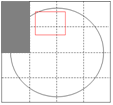 |
FSC08 |
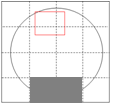 |
HNW01 |
 |
| FNW02 |
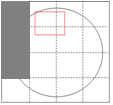 |
FNE09 |
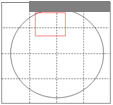 |
HNE02 |
 |
| FCW03 |
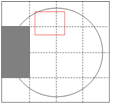 |
FSE10 |
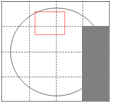 |
HNE03 |
 |
| FSW04 |
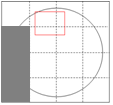 |
FSE11 |
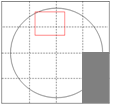 |
|
|
| FSW05 |
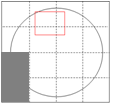 |
FSE12 |
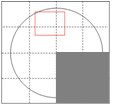 |
|
|
| FSW06 |
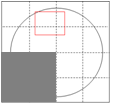 |
FSE13 |
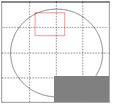 |
|
|
| FSW07 |
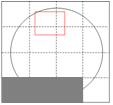 |
FCE14 |
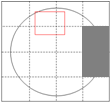 |
|
|
| Note |
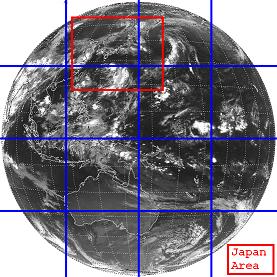 |
- F : Full-disk observation
- H : Hemisphere-disk observation
- S : South side area
- N : North side area
- E : East side area
- W : West side area
- C : Center area
- Number : fig Number
|
Reference

















